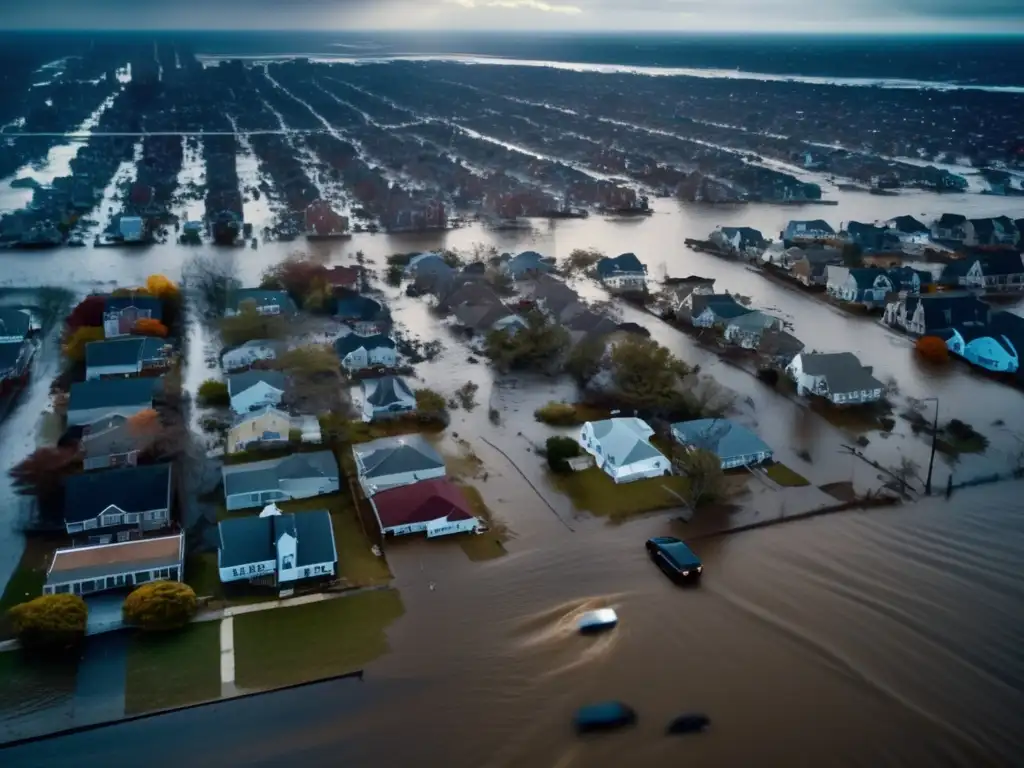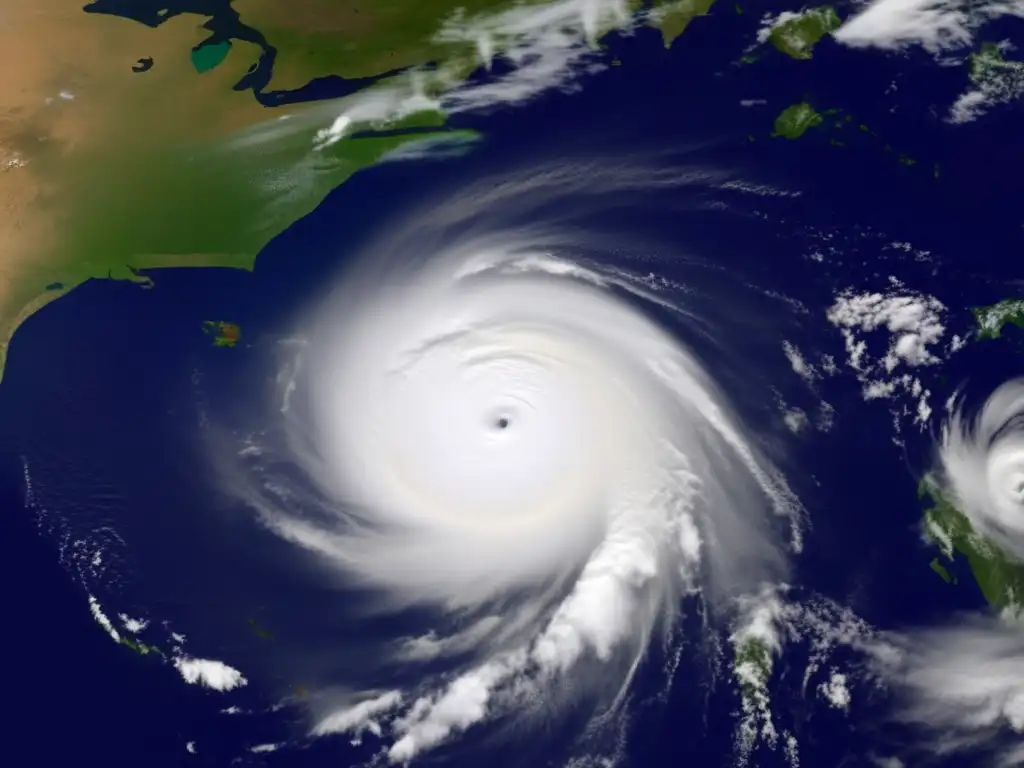The Legacy Of Hurricane Sandy: A Retrospective Analysis

The Legacy of Hurricane Sandy: A Retrospective Analysis
Introduction
Hurricane Sandy was a devastating storm of superlatives. It formed in the Caribbean Sea on October 22, 2012, and grew into a Category 3 hurricane with wind speeds of up to 115 mph. Sandy then headed north, wreaking havoc on Jamaica, Cuba, and Haiti before hitting the United States east coast on October 29. The storm ravaged the mid-Atlantic and Northeast areas of the country, causing billions of dollars in damages, leaving millions without power, destroying homes and businesses, and claiming more than 100 lives.
The aftermath of Hurricane Sandy marked a turning point in the discussion around climate change, as it was one of the most destructive storms ever to hit the U.S. What can be learned from this disaster? What did it teach us about hurricanes and their impact? What lessons can we take away from Hurricane Sandy today? This retrospective analysis will seek to address these questions and more.
The Formation and Path of Hurricane Sandy

The Birth and Evolution of the Storm
Hurricane Sandy originated as a tropical wave that moved off the coast of Africa on October 11, 2012. Over the course of the next nine days, the storm traveled across the Atlantic and through several Caribbean countries, including Jamaica and Cuba. As the storm approached the United States, it began to interact with an existing cold front, resulting in its transformation into a hybrid storm system with hurricane-like qualities. The storm joined forces with the cold front and stayed offshore for several days before making landfall on October 29, 2012.
The Devastating Path of Destruction
Hurricane Sandy left a path of destruction in its wake, affecting 24 states in total. Some of the hardest-hit areas included New York, New Jersey, Connecticut, and Maryland, where residents saw massive power outages, flooding, and property damage. The storm caused an estimated 50 billion dollars in damages, making it the second-costliest hurricane in U.S. history.
The Human Toll
More than 100 people lost their lives as a result of Hurricane Sandy, tragically highlighting the dangers posed by hurricanes and other weather events. Several other people were injured or displaced as a result of the storm.
The Impact of Hurricane Sandy on Infrastructure and the Environment

The Effects on Coastal Communities
Hurricane Sandy had a significant impact on coastal communities, particularly in terms of the environment and infrastructure. Storm surges resulted in extensive flooding, which caused erosion and damage to buildings and properties near the coast. It also put a strain on sewage systems and water treatment plants, leading to potential health hazards. With many of these communities relying on tourism, the damage to the physical environment has had devastating long-term impacts on local economies.
The Damage to Energy Infrastructure
Hurricane Sandy also highlighted many vulnerabilities in energy infrastructure, both in terms of electricity and fuel. Power outages were widespread and long-lasting, with some areas losing power for more than two weeks. The storm also led to fuel shortages, affecting the availability of gasoline for vehicles and generators used for power backup.
The Role of Climate Change
Hurricane Sandy sparked renewed interest in the role that climate change plays in the frequency and severity of natural disasters. While conclusive evidence linking specific storms to climate change can be difficult to establish, there is evidence to suggest that climate change may be contributing to more intense and frequent storms, as well as rising sea levels. As the planet’s climate continues to shift, it is essential that people take action to anticipate and mitigate the potential effects of future storms.
Preparing for Hurricanes: Lessons from Hurricane Sandy

The Importance of Preparedness Planning
Hurricane Sandy exposed the importance of having a preparedness plan in place long before a storm hits. It is essential to have a well-thought-out evacuation plan and an emergency kit containing everything from food and water to medications and first aid supplies. Being prepared also means considering the unique needs of different members of the community, such as elderly or disabled individuals, and taking steps to ensure their safety during a storm.
Building Resilience for Businesses and Communities
Hurricane Sandy exposed the critical need for building resilience into communities and businesses. In the aftermath of the storm, many businesses struggled to remain open or rebuild, while local communities fought to recover. Building resilience into these entities will require investment in physical infrastructure, community engagement, and better coordination between different stakeholders.
Investing in Climate Resilience
Finally, Hurricane Sandy demonstrated the urgent need for investing in climate resilience measures. This includes everything from strengthening infrastructure to forestalling further climate change by reducing greenhouse gas emissions. Governments, businesses, and individuals can all play a role in mitigating the impact of future storms.
Frequently Asked Questions

-
How can I prepare for a hurricane?
Preparing for a hurricane involves developing a readiness plan well in advance of any storm warnings. You should build a kit that includes enough food, water, and essential supplies for several days, consider the needs of vulnerable groups like the elderly or those with disabilities, and have a plan for evacuation if necessary.
-
How long does a typical hurricane season last?
Hurricane season typically lasts from June through November in the Atlantic Ocean and from May to November in the Eastern Pacific. However, it is important to note that storms can occur outside of these traditional seasons.
-
How are hurricanes classified?
Hurricanes are classified based on their maximum sustained wind speeds, according to the Saffir-Simpson Hurricane Wind Scale. Category 1 hurricanes have wind speeds between 74 and 95 mph, while Category 5 hurricanes have wind speeds exceeding 157 mph.
-
What should I do during a hurricane?
During a hurricane, it is essential to stay informed about the storm’s progress by listening to weather reports and following advice from emergency officials. If you have not been ordered to evacuate, you should stay indoors, away from windows and doors, and be prepared to take shelter in a safe location if necessary.
-
What should I do after a hurricane?
After a hurricane, you should first ensure your own safety and contact emergency services if necessary. Check the news and local authorities for updates, avoid traveling unless absolutely necessary, and document any damage to your property for insurance purposes.
Conclusion
In conclusion, Hurricane Sandy serves as a stark reminder of the importance of preparedness planning, building resilience into communities and businesses, and investing in climate resilience measures. While the immediate devastation caused by Sandy was significant, the long-term impact is equally notable, with many local communities and businesses still struggling to rebuild years later. By learning from the lessons of Hurricane Sandy, we can work together to mitigate the effects of future storms and build a more resilient world.
Thank you for taking the time to read this retrospective analysis, and we encourage you to share your thoughts and comments below. Please stay safe and remember to stay informed and prepared as hurricane season approaches.
Additional Resources

For more information on how to prepare for hurricanes and other natural disasters, please visit the following resources:
- Ready.gov's Hurricane Preparedness Guide: https://www.ready.gov/hurricane-toolkit
- The National Hurricane Center: https://www.nhc.noaa.gov/
- The American Red Cross: https://www.redcross.org/get-help/how-to-prepare-for-emergencies/types-of-emergencies/hurricane.html
 The Role Of Global Warming In Hurricane Intensity And Frequency
The Role Of Global Warming In Hurricane Intensity And Frequency 10 Smallest Hurricanes On Record
10 Smallest Hurricanes On Record A Chronicle Of The Worst Hurricane Seasons In The Caribbean
A Chronicle Of The Worst Hurricane Seasons In The CaribbeanIf you want to discover more articles similar to The Legacy Of Hurricane Sandy: A Retrospective Analysis, you can visit the Basic knowledge about hurricanes: category.
Leave a Reply

Articulos relacionados: